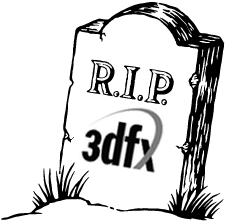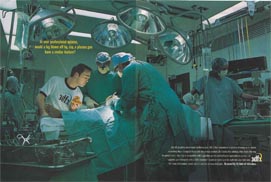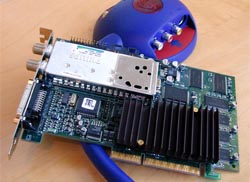
| Summary: |

History of 3DFX : 1999-2000
| 1999 |
In the year 1999 everything should become new and fresh. Firstly, 3dfx presented itself (pay attention to the small, fine difference) both with the new business strategy and a new emblem.
The new head of the 200 men strong company became Richard Burns, a successful businessman with 25 years of industry experience. Besides that, 3dfx started a huge, expensive publicity campaign (20 million USD). For the first time self-advertisement of 3dfx appeared in magazines and on television.
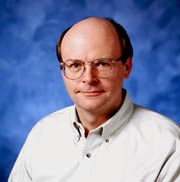 Richard Burns |
However, in the background nothing had been really correct: STB and 3dfx did not blend well with each other as expected, business philosophies went much too far apart and therefore already first common dates couldn’t be kept. Besides that, 3dfx upset the so far well earning third manufacturers and shunt them into their competitors. The pressure of the competitors grew. nVidia had fastly caught up with 3dfx and made the 32-Bit Rendering to a real marketing hype, what should turn out later as a serious problem.
At the same time 3dfx started a high-secret project around a new superchip, the Rampage. This superchip should secure the throne on further and was originally planned for the end of 2000. However, this project should turn out as one of the most serious erroneous trends of 3dfx, due to substantial problems and delays.
Only at 7 April the first Voodoo 3 2000 and 3000 AGP graphics cards appeared on the market. The price was enticing and owing to the good name and the unbeatable speed as well as the full compatibility to all games, these cards became again a large success.
The Voodoo 3 disposed besides a good 2D-kernel of excellent multimedia features, 3dfx seemed to have something learned.
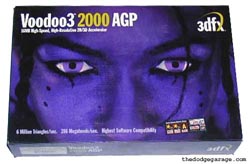 |
 |
Nevertheless, the Voodoo 3 graphics cards didn’t completely correspond with the Mainstream, nVidia's TNT2 chip could do something more: It was able to handle 32Bit Rendering as well as textures more largely than 256x256 bit. However, it wasn’t the TNT2 chip but its successor, which should push the king of the throne.
In June and July 1999 3dfx gained a foothold in the sector of the Apple computers for the first time. There were indeed already Banshee and Voodoo 1 based graphics cards (Villagetronic MacMagic, MacMagic 540, MacPicasso 7xx), however, only then Macintosh driver for Voodoo 2 and 3 were published.
3dfx found with Villagetronic a partner in the Apple segment (Voodoo 3 chips can be found on the MacPicasso 8xx and 9xx cards), however, the outled was rather small in the comparison to the PC business.
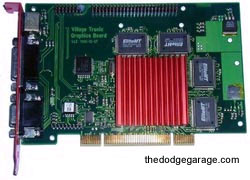 VillageTronic MP750 |
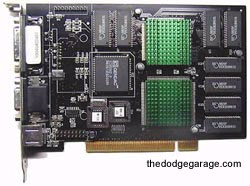 Villagetronic MacMagic |
Still in July 3dfx dared the grasp again towards the OEM market and presented the product row Velocity: A minimized version of the Voodoo 3 chip set should offer the possibility to the complete system manufacturers to build in low-priced 3dfx graphics cards into their systems. The success of these products was missing. Therefore, only one of the two announced graphics cards found ist way on the shelves of the dealers, the Velocity 100.
On 30 July, one week after the appearance of the TNT2 Ultra of nVidia, the flag ship of the Voodoo 3 graphics cards was released: The Voodoo 3 3500. With higher chip and memory clock cycles, video in and out function as well as a built-in TV-Tuner 3dfx brought a multimedia-monster on the market like it was only known from ATI's All-In-One graphics cards. With its price of 249 USD the card was surprisingly not very favorable, returned to 3dfx again some attention.
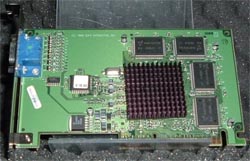 3dfx Velocity |
The autumn should become turbulent: Briefly after the publication of the Voodoo 3 2000 and 3000 for the PCI interface, nVidia brought a new product on the market, which should pressurize 3dfx like never before: The GeForce 256 chip. Accelerated by Microsofts Direct3D graphics interface and the new feature Transform&Lightning (TnL) as well as to the game Quake 3 as reference object the graphics card threw a large shade on 3dfx in the scene. Fast acting was in demand and 3dfx announced a new superchip: the VSA100.
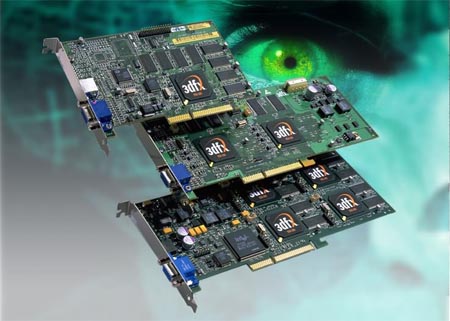
At the same time CEO Greg Ballard back out of 3dfx, its successor became Alex Leupp.
Already on 15 November Q3D announced with the AAlchemy a supercard based on the VSA100 and two days later the first prototypes were seen at the COMDEX. The as Voodoo 4 4500, Voodoo 5 5000, 5500 and 6000 called maps were however still far at this time from a final product.
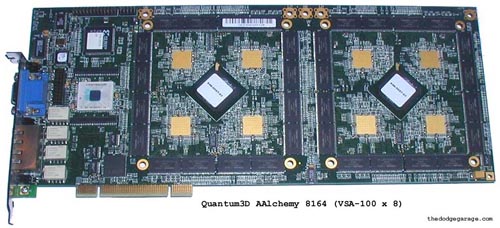
Nonetheless, also nVidia still got ist attraction: With the GeForce 256 DDR nVidia increased increased its lead on the Voodoo 3 family again clearly and announced at the same time already the successor GeForce 2
| 2000 |
The year 2000 should simultaneously become the fate year and the end of 3dfx. From the for the end of 1999 or beginning of 2000 announced VSA100 products nothing could have been heard for months.
In March 2000 3dfx bought in the chip manufacturer Gigapixel and expected as a result new technologies and markets. Afterwards this became together with the purchase of STB and the eternally moving development of the Rampage chip one of the largest loss investments of 3dfx.
Only on 5 May 2000 the first Voodoo 5 5500 appeared on the market, however withdrawn three weeks later because of problems with the current supply.
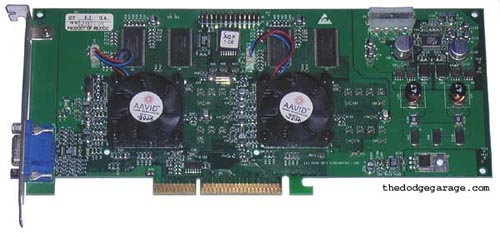
The revised version appeared then only at the 9.Juni on the market, but the Voodoo 5 should not be allowed success: Despite the 32-Bit Renderings, a exzellenten image quality, textures up to 2048 on 2048 pixels and a price of 50 USD under the nVidia flag ship GeForce 2 GTS the graphics card sold itself only moderately. nVidia had won by their open business policy at reputation with the gamers and game developers, whereas 3dfx had already gambled away a majority of its sympathies.
In the summer 3dfx became for the first time consciously how badly it stood for the company: Despite the Voodoo 5 5500 for the Apple Macintosh the capital of the company melted. As the first emergency measure the supermap V5 6000 as well as its smallest brother V5 5000 were deleted from the register. At the end of August 3dfx suffered a further setback in form of a complaint on the part of nVidia to a patent law injury, this right controversy dragged on up to the buying up of 3dfx.

Voodoo 5 5000 (Prototype)
In October 3dfx tried with a last attempt to bring still money into the empty cashes, they brought the Voodoo 4 4500 on the market and were thereby one year too late. The graphics card had a good price/performance ratio, however it was already too late, besides nVidia announced the GeForce 3 for January 2001.
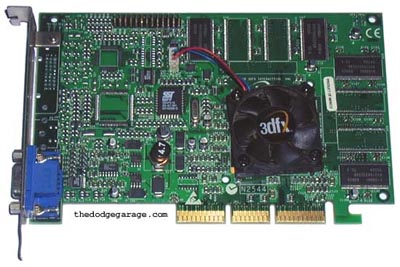
Voodoo 4 4500
3dfx worked feverishly on the VSA101, a revision of the VSA100 with DDR support, which should return lost performance. Last desperate steps were introduced with announcements over the sales of STB and presenting a new business structure.
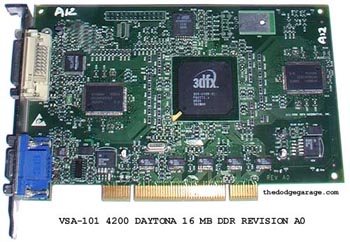
In the middle of November 3dfx sold a majority of its licenses, also these for the SLI technology at Q3D to get again little money into the cash but it should not be enough. On the black Friday, the 15 December 2000 3dfx was bought up by its competitor nVidia for the sum total by 112 million USD (70 of it in cash, the remainder in shares).
3dfx disappeared from one day to the others from the market. Only with this press release....
